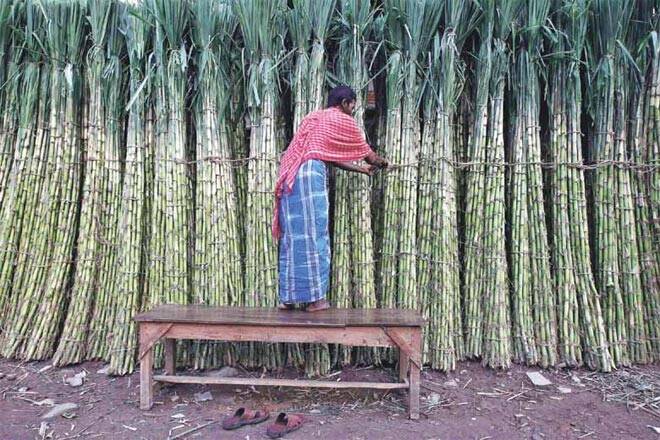
PAYMENT ARREARS FROM SUGAR MILLS TO CANE FARMERS GO UP TO 23,000 CRORE
CONTEXT
Central government data showed that, as on February 28, dues of 22,900 crore were pending for the cane procured in the current season, which began in October 2020.
MORE ABOUT NEWS
Mill owners want the Centre to hike the minimum selling price of sugar to address the issue.
Apart from price hikes, the other way to increase liquidity is reducing surplus stocks through exports.
Prices of sugar are market driven but with a view to protect the interests of farmers, concept of Minimum Selling Price (MSP) of sugar was introduced.
By this, industry gets minimum cost of production of sugar, so as to enable them to clear cane price dues of farmers.
SUGAR CANE PRICING
Pricing of sugarcane is governed by statutory provisions of Sugarcane (Control) Order, 1966 issued under Essential Commodities Act (ECA), 1955.
Under this, Fair & Remunerative Price (FRP) is announced on recommendations of Commission for Agricultural Costs and Prices (CACP).
Also, apart from FRP, some states declare state specific sugarcane prices called State Advised Prices (SAP), usually higher than FRP.
Dual sugarcane pricing distorts sugarcane and sugar economy and leads to cane price arrears.
SUGAR INDUSTRY’S LOCATION IN INDIA
Sugar industry is broadly distributed over two major areas of production- Uttar Pradesh, Bihar, Haryana and Punjab in the north and Maharashtra, Karnataka, Tamil Nadu and Andhra Pradesh in the south.
South India has tropical climate which is suitable for higher sucrose content giving higher yield per unit area as compared to north India.
PROBLEMS OF SUGAR INDUSTRY
Uncertain Production Output – Sugarcane has to compete with several other food and cash crops like cotton, oil seeds, rice, etc. This affects the supply of sugarcane to the mills and the production of sugar also varies from year to year causing fluctuations in prices leading to losses in times of excess production due to low prices.
Low Yield of Sugarcane – India yield per hectare is extremely low as compared to some of the major sugarcane producing countries of the world. For example, India’s yield is only 64.5 tonnes/hectare as compared to 90 tonnes in Java and 121 tonnes in Hawaii.
Short crushing season – Sugar production is a seasonal industry with a short crushing season varying normally from 4 to 7 months in a year.
o It causes financial loss and seasonal employment for workers and lack of full utilization of sugar mills.
Low Sugar recovery rate – The average rate of recovery of sugar from sugarcane in India is less than ten per cent which is quite low as compared to other major sugar producing countries.
High Production cost – High cost of sugarcane, inefficient technology, uneconomic process of production and heavy excise duty result in high cost of manufacturing.
o Most of the sugar mills in India are of small size with a capacity of 1,000 to 1,500 tonnes per day thus fail to take advantage of economies of scale.
Government policy and control – Government has been controlling sugar prices through various policy interventions like export duty, imposition of stock limit on sugar mills, change in meteorology rule etc., to balance supply demand mismatch.
o But these controls have resulted in unremunerative sugar prices, increasing arrears for sugar mills and dues to be paid to sugarcane farmers. s of Sugar Industry
Way Forward
The sector needs infusion of capital, but also policy measures and structural changes. Technological upgradation in age old mills especially in Uttar Pradesh and Bihar to improve efficiency in production.
Major sugar producing States like Maharashtra and Karnataka have migrated to the progressive revenue-sharing formula other states should also introduce revenue-sharing formula to ensure farmers receive a share in the profits.
When domestic production is likely to be in excess of domestic consumption government should encourage exports through policy changes.
Mills should be allowed to produce more alcohol (a higher value product with massive industrial demand). Exports of sugar and alcohol should also be decontrolled. It will improve financial situation of mills and could afford to pay farmers a price based on the market prices of sugar.
The production cost of sugar in India is one of the highest in the world. Intense research is required to increase the sugarcane production in the agricultural field and to introduce new technology of production efficiency in the sugar mills.
Production cost can also be reduced through proper utilisation of by- products of the industry.
Government should encourage ethanol production. It will bring down the country’s oil import bill and help in diversion of sucrose to ethanol and to balance out the excess production of sugar.
